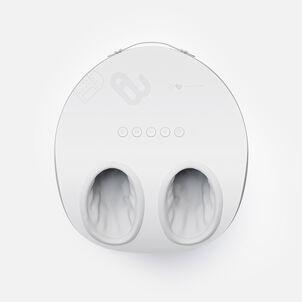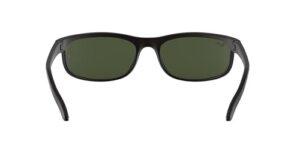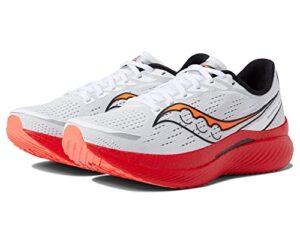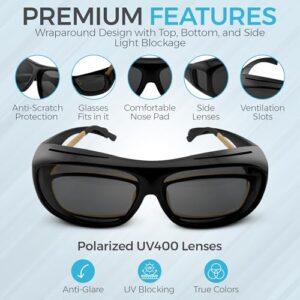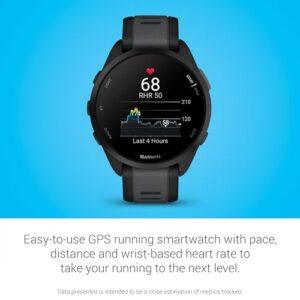Yes, shoe inserts can be FSA eligible. It depends on the type and purpose.
Let’s dive into the details. Flexible Spending Accounts (FSAs) are great for covering health expenses. Many people wonder if shoe inserts qualify. FSAs can cover various medical needs, but not everything makes the cut. Understanding what qualifies can save you time and money.
This blog will explain if shoe inserts fit the bill. We will look at the rules and help you make the most of your FSA. Stay tuned to learn more about shoe inserts and FSA eligibility.

Credit: www.amazon.com
Introduction To Fsa Eligibility
Understanding FSA eligibility can be crucial for managing healthcare costs. Flexible Spending Accounts (FSAs) offer a way to save money on medical expenses. But what expenses qualify? Let’s explore.
What Is Fsa?
FSA stands for Flexible Spending Account. It’s a special account you put money into to pay for certain out-of-pocket healthcare costs. You don’t pay taxes on this money. This means you save an amount equal to the taxes you would have paid on the money you set aside.
FSAs are often offered by employers as part of a benefits package. They can be used for a variety of medical expenses. This includes prescriptions, doctor’s visits, and sometimes even over-the-counter items.
Qualifying Expenses
Not all medical expenses are FSA eligible. The IRS sets guidelines on what qualifies. Generally, these are expenses that treat or prevent a physical or mental illness. For example, co-pays, deductibles, and prescriptions usually qualify.
Over-the-counter medications and products can also be eligible. This includes items like bandages, hot/cold packs, and even shoe inserts. Yes, shoe inserts can be FSA eligible if they are for medical use. If you need them to treat a condition, like plantar fasciitis, they often qualify.
It’s important to keep receipts and documentation. This helps in case you need to prove that an expense is eligible. Always check with your FSA administrator if you’re unsure about an item.
Understanding Shoe Inserts
Understanding shoe inserts can help you manage foot pain and improve comfort. Shoe inserts come in various types and serve different purposes. They can be used to provide arch support, cushion your feet, or correct foot problems. Knowing which type of shoe insert to choose can make a big difference in your overall foot health.
Types Of Shoe Inserts
Shoe inserts are available in different types. Arch support inserts help with flat feet and high arches. Cushioning inserts provide extra padding for comfort. Heel cups are designed to help with heel pain. Orthotic inserts correct foot problems and improve alignment. Gel inserts offer soft, flexible support.
Common Uses
Shoe inserts are commonly used to relieve pain and improve comfort. People use them for conditions like plantar fasciitis, flat feet, and high arches. Athletes use them to enhance performance and prevent injuries. Inserts can also help with foot fatigue from standing or walking for long periods. They provide stability and support for everyday activities.
Fsa Eligibility Of Shoe Inserts
Shoe inserts can offer significant relief and support for various foot conditions. But, you might be wondering, are shoe inserts FSA eligible? Understanding the FSA eligibility of shoe inserts can help you make the most of your healthcare savings and ensure you’re getting the necessary support for your feet without draining your wallet.
Eligible Conditions
Not all shoe inserts qualify for FSA reimbursement. To be eligible, the inserts typically need to be prescribed to treat a specific medical condition. Common conditions include plantar fasciitis, flat feet, and other diagnosed foot ailments.
If you are suffering from chronic foot pain, your doctor might recommend custom orthotics. These inserts are usually designed specifically for your feet and can provide the necessary support to alleviate discomfort. Confirming that your condition is recognized can save you from unnecessary expenses.
Required Documentation
To ensure your shoe inserts are FSA eligible, proper documentation is crucial. Usually, this involves a letter of medical necessity from your healthcare provider. The letter should detail your condition and explain why the shoe inserts are needed for treatment.
Additionally, keep your receipts and any related documentation. It’s always better to be over-prepared than under-prepared when it comes to reimbursement. This can make the submission process smoother and increase the likelihood of approval.
Have you ever had to navigate the FSA reimbursement process? Share your experiences and tips in the comments below. Your insights could help others who are trying to make the most of their healthcare savings accounts.
Benefits Of Using Shoe Inserts
Shoe inserts provide various benefits that enhance foot health and overall well-being. They are designed to support the foot’s natural structure, offering relief and correcting alignment. Many people experience significant improvements in daily comfort and mobility.
Pain Relief
Shoe inserts can alleviate foot pain caused by various conditions. Plantar fasciitis, bunions, and flat feet often lead to discomfort. Proper inserts distribute pressure evenly. They reduce strain on specific areas of the foot. This helps minimize pain and improves walking comfort.
Improved Posture
Inserts also contribute to better posture. They provide the necessary arch support. This helps align the spine correctly. Good foot alignment can reduce back and hip pain. It also promotes a healthier gait. Using inserts regularly can lead to noticeable posture improvement.
Financial Savings With Fsa
Flexible Spending Accounts (FSA) offer a way to save money on health-related expenses. Shoe inserts are often eligible for FSA reimbursement. Using FSA funds for shoe inserts can provide significant financial savings.
Tax Advantages
One key benefit of using an FSA is the tax advantage. Contributions to an FSA are made with pre-tax dollars. This lowers your taxable income. This means you pay less in taxes overall.
Using pre-tax dollars for shoe inserts can lead to substantial savings. This is especially true if you need custom or specialized inserts. The tax benefits can make these more affordable.
Cost Comparison
FSA funds can cover the cost of shoe inserts. This can make a big difference. Without an FSA, you pay for inserts with after-tax dollars. This can be more expensive.
Compare the costs. An insert that costs $50 could effectively cost less with FSA funds. The savings can add up, especially if you need multiple pairs. Using your FSA can make managing foot health more budget-friendly.

Credit: fsastore.com
How To Purchase Fsa-eligible Shoe Inserts
Shoe inserts can be FSA-eligible. Check your FSA plan details. Purchase from approved retailers to ensure eligibility.
Purchasing FSA-eligible shoe inserts can be a game-changer for both your health and your wallet. Flexible Spending Accounts (FSAs) are a fantastic way to save money on essential health-related items, and shoe inserts are no exception. Whether you suffer from foot pain, need extra support during workouts, or just want to enhance your overall comfort, understanding how to buy FSA-eligible shoe inserts is crucial. Let’s break it down step by step.Approved Retailers
When buying FSA-eligible shoe inserts, you should start by identifying approved retailers. Not all stores accept FSA cards, so it’s vital to know where you can shop. Pharmacies like CVS and Walgreens are good places to begin. Online options are also available. Websites like FSAstore.com specialize in FSA-eligible products. Amazon even has a section dedicated to FSA-eligible items, making your shopping experience seamless. Always double-check that the retailer accepts your FSA card. Some smaller stores might not, so it’s better to confirm in advance.Using Your Fsa Card
Using your FSA card is straightforward, but there are a few things you should keep in mind. First, ensure your FSA card has sufficient funds. You don’t want to get to the checkout and find out you’re short. When purchasing online, enter your FSA card details just like you would a regular debit or credit card. Some websites even have a checkbox for FSA/HSA payments, making the process even simpler. In-store purchases follow a similar process. Swipe your FSA card at the point of sale. If the store accepts FSA cards, the transaction will proceed without issues. If it doesn’t, you may need to pay out of pocket and submit a claim for reimbursement. By following these steps, you can easily purchase FSA-eligible shoe inserts and enjoy the benefits they offer. Have you checked your FSA balance lately? Investing in your foot health might just be the best use of those funds.Tips For Maximizing Fsa Benefits
Maximizing your Flexible Spending Account (FSA) benefits can be a game-changer for managing out-of-pocket healthcare expenses. But did you know that shoe inserts can be eligible for FSA reimbursement? Understanding how to make the most out of your FSA can help you save money and ensure you get the healthcare products you need.
Annual Contribution Limits
Each year, the IRS sets a limit on how much you can contribute to your FSA. For 2023, the limit is $2,850 per employee. Make sure you know this number so you can plan your healthcare spending wisely.
Contributing the maximum amount can help cover costs for eligible items like shoe inserts, which can be essential for foot health. Keep track of your expenses throughout the year to ensure you’re using your funds effectively.
What happens if you don’t use all your FSA money? Some plans offer a grace period or let you carry over a small amount to the next year. Check your plan’s specifics to avoid losing your hard-earned money.
End-of-year Spending
As the year-end approaches, review your FSA balance. If you have unused funds, consider purchasing eligible items you might need. Shoe inserts, for instance, can be a smart buy if you experience foot pain or need extra support.
Don’t wait until the last minute. Shopping early can ensure you get the products you need without the holiday rush. Plus, you avoid the risk of popular items being out of stock.
Have a list of potential purchases ready. This can include prescription medications, medical equipment, and other FSA-eligible items. Prioritize what’s most important for your health and well-being.
Finally, if you’re unsure about what’s eligible, consult your FSA plan’s website or customer service. They can provide a comprehensive list of approved expenses.
What strategies do you use to maximize your FSA benefits? Share your tips and experiences in the comments below!

Credit: powerstep.com
Frequently Asked Questions
Can I Buy Shoe Insoles With A Fsa Card?
Yes, you can buy shoe insoles with a FSA card. They are considered eligible medical expenses.
What Shoes Are Fsa Eligible For?
FSA eligible shoes include orthopedic footwear, diabetic shoes, and inserts. They must be medically necessary and prescribed by a doctor.
Are Shoe Inserts Hsa Eligible?
Yes, shoe inserts are HSA eligible. They must be prescribed by a healthcare professional. Always check with your HSA provider for confirmation.
Are Arch Supports Fsa Eligible?
Yes, arch supports are FSA eligible. They help alleviate foot pain and improve comfort, making them a qualifying medical expense.
Conclusion
Shoe inserts can be FSA eligible. Check your plan details to confirm. This could save you money on necessary foot support. Comfort and support are vital for daily life. Consult your doctor for recommendations. Remember to keep receipts for reimbursement.
Using FSA funds wisely helps manage health costs. Keep your feet happy and healthy.
{ “@context”: “https://schema.org”, “@type”: “FAQPage”, “mainEntity”: [ { “@type”: “Question”, “name”: “Can I buy shoe insoles with a FSA card?”, “acceptedAnswer”: { “@type”: “Answer”, “text”: “Yes, you can buy shoe insoles with a FSA card. They are considered eligible medical expenses.” } } , { “@type”: “Question”, “name”: “What shoes are FSA eligible for?”, “acceptedAnswer”: { “@type”: “Answer”, “text”: “FSA eligible shoes include orthopedic footwear, diabetic shoes, and inserts. They must be medically necessary and prescribed by a doctor.” } } , { “@type”: “Question”, “name”: “Are shoe inserts HSA eligible?”, “acceptedAnswer”: { “@type”: “Answer”, “text”: “Yes, shoe inserts are HSA eligible. They must be prescribed by a healthcare professional. Always check with your HSA provider for confirmation.” } } , { “@type”: “Question”, “name”: “Are arch supports FSA eligible?”, “acceptedAnswer”: { “@type”: “Answer”, “text”: “Yes, arch supports are FSA eligible. They help alleviate foot pain and improve comfort, making them a qualifying medical expense.” } } ] }
Madison Clark is a footwear expert and the voice behind MyStyleGrid.com. She specializes in honest shoe reviews, style tips, and practical guides to help readers find the perfect pair for any occasion. With years of experience in blogging and content creation, Madison makes footwear knowledge simple, stylish, and easy to follow.

